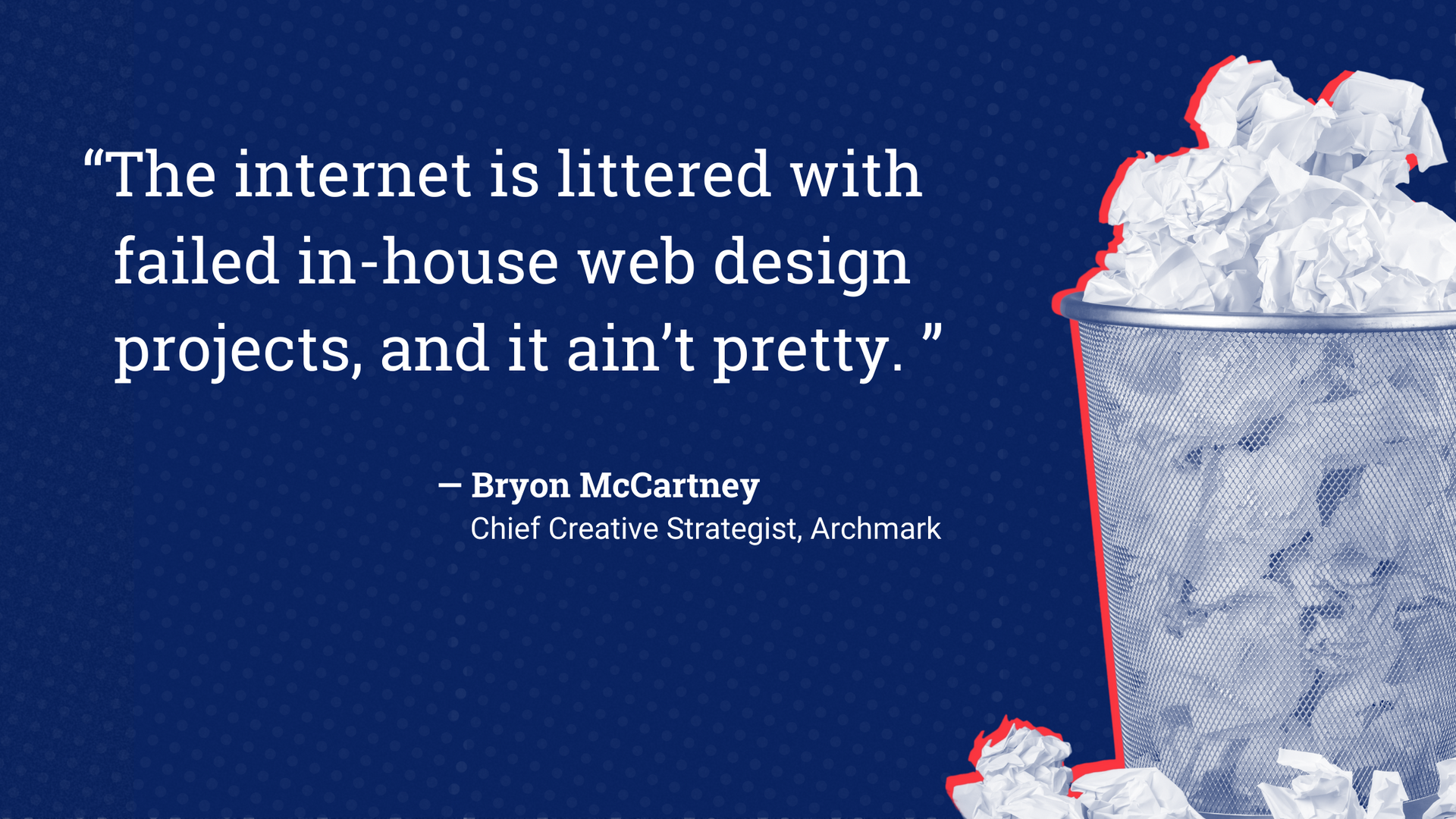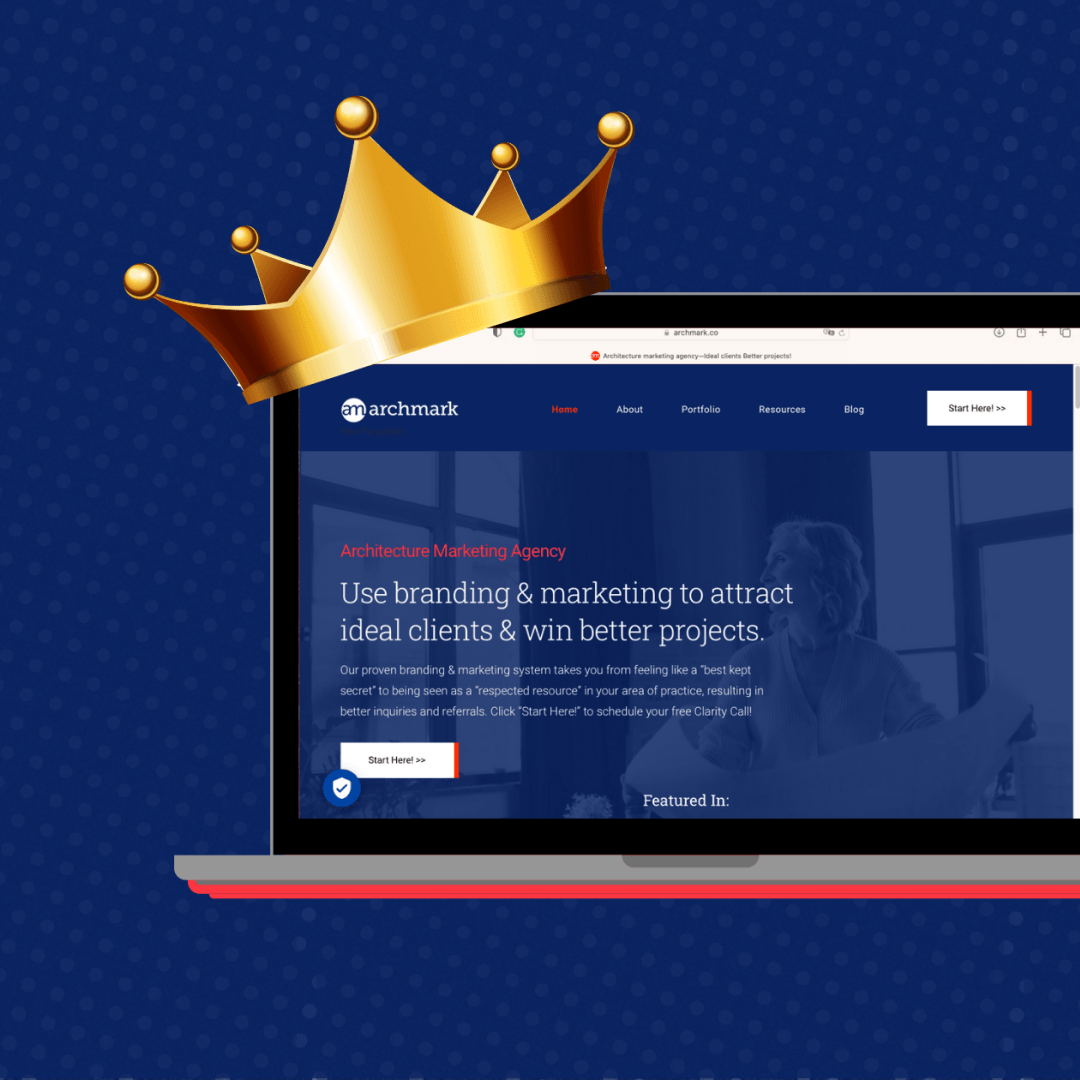Five Architecture Firm Website Design Tips For Better Results
Improve Your Architecture Firm Website Design!
These Are The Architecture Website Design Tips Your Firm Can’t Ignore
I've been designing websites since 1997. In technology terms, that's nearly three millennia ago. In that time, website design has gone through three distinct evolutions. Currently, we are in "Web 3.0" and we will likely see "Web 4.0" becoming more prevalent over the coming decade.
What does that mean for you, dear architect? If you only take one thing away from this article, it should be that your architecture firm's website needs to serve a much different purpose than it did five or ten years ago. It used to be that the best architecture websites were simply online brochures or portfolios. Unfortunately, for firms who haven't updated their website strategy in th past few years, those times are gone.
With all the changes over the years, it's no surprise that I often speak to firm owners who are confused about how architecture website design really works. While you might know bad architecture firm website design when you see it, you might not understand what makes architecture websites work well. This article will change that.
We Tested 650+ Architecture Firm Websites, So You Don't Have to Guess What Will or Won't Work
Since 2017, Archmark has tested 650+ architecture firm websites to better understand the challenges firms websites face and how to avoid them. What we found was that 75% of the architecture websites we tested suffered from major issues affecting their performance and functionality.
We've seen firm websites that lacked appealing visuals easily outperform even the best architecture firm websites simply by paying attention to fundamental best practices recommended by Google and other authorities.

How Do You Improve Your Architecture Firm Website Design?
Start your architecture firm website design project by identifying your ideal client and what problems you solve for them. Make sure your message underscores the value you provide to them.
You'll also want to determine clear goals for your website. Back in 1997, most people looked at websites as online brochures. Today, the best firm websites are a critical component in a firm's business development pipeline. Of course, you'll want to include your firm's portfolio of work, but architecture website design solutions are about attracting ideal clients and converting them into qualified leads.
We have found that the best approach is to workshop your website requirements with your team and a lead generation professional. You'd be surprised at how your website can help in attracting, nurturing, and converting visitors into bonafide sales opportunities.
I cannot overstate the importance of involving professional help in building your website. The internet is littered with failed in-house web design projects, and it ain't pretty. In fact, a poorly designed website can hurt your business. Have you ever had someone say, "By the way, did Joe Smith call you? I referred him to you and gave him your website address." If you never heard from Joe Smith, it was likely because they visited your website.
Architects seem prone to view websites as a design problem when that could not be further from the truth. A website that does not help you produce leads is a waste of time and money. A great design that shows off your work is a given, but your website needs to appeal to your ideal client, and it has to provide a solution to their problem. If you try to design your website to impress other architects, you're going to waste your time and money.
If you're ready to get started designing your website, pay attention to these five factors to ensure your website is a success.
1. Design for Mobile First
We're no longer living in the desktop and laptop era. Mobile browsing has surpassed desktop browsing. In fact, Google now uses mobile-optimized design as a key search engine ranking factor.
It's easier for a browser to scale a small website to a desktop than vice versa. A site viewed on a smartphone or tablet might look squished or require some strange stretching to be viewed correctly.
This makes for a poor user experience and can result in a higher bounce rate. Think of your users and design for the most commonly used devices.
You also need to ensure your site looks great on different devices. Just because it looks good on an iPhone doesn't mean it'll look good on a Galaxy or an iPad. You can test your website by using online tools that can emulate the view on different devices.
Remember, digital-first firms need to also be mobile first. Be sure to optimize your site for mobile use.

2. Prioritize Speed
Modern website design must be optimized to load quickly. While you might want large, high-quality images to show off your portfolio of projects, big images take time to load, and that means lost visitors.
Rather than uploading 10 MB files all throughout your site, first take time to resize and fit images to the widest possible dimension of your text body. Resizing your photos is the easiest way to ensure higher website speed.
We recommend keeping files to 1500 pixels or less on the longest edge. We also recommend having image file sizes at 200 KB or less. One of our favorite apps to use for reducing image size is Squash. Once downloaded, all you have to do is drag and drop your images into the app and it will automatically compress them. Super fast and easy!
Learn more about designing for mobile, site load speed and other architecture firm website best practices in our article on the Five Reasons Architecture Websites Fail.

3. Content is Still King

Your website should be a showcase of your expertise and skills as an architect. However, and contrary to popular belief, your project portfolio is not the best way to communicate that expertise.
Your portfolio certainly answers the question of whether or not you can design great projects, but for most clients, your aesthetic is just one part of why they will hire you. They have more pressing questions, like 'how do you work,' 'what's the timeframe,' 'what's the cost,' and many other basic questions. The more you are able to answer the concerns of your target audience the more time they will spend on your site, and the more likely they are to contact you.
A great place to start is to write down the typical questions that you get from your clients when you are in the initial stages of working with them. By answering these questions on your website, you will solve several problems at once:
1) You'll help them to confirm that they have come to the right place,
2) You'll save time having to answer the same questions over and over, and
3) You'll attract more search engine traffic, because these are the same questions that clients typically try to research when they go looking for answers on Google.
Content can take many forms, there are blog articles, FAQs, podcasts, videos, infographics, slide shares, and many other ways to communicate your expertise. Find a format that works well for you, and try to add new content to your website on a regular basis.
4. Design
Just like a building's design has to create a sense of harmony and consistency, your website design architecture must follow suit. However, architects often struggle with the website design process, because they try to translate their three-dimensional architectural style into a two-dimensional world. This rarely has the intended effect and usually results in confusing visitors.
Your website's design should be a reflection of your brand, not a reimagining of your body of work. Let your work stand out on it's own, captured in high-quality professional photography.
If you have not already developed visual branding guidelines for your firm, get that done before diving into a website design. Keep things simple. Do not go over-the-top with crazy font and color combinations, and do not try to adapt someone else's style as your own.
To get some deeper insights, read our Architecture Portfolio Tips article. It features five ideas for making your portfolio stand out.
Once you are happy with your website's style, you'll also want to see how you can spread that style across your social media and other online channels. Design consistency at every point your prospects and clients find you will reinforce your position and make it easier to remember your firm.

5. Clear Message
When someone visits your website, it’s important to keep your messaging clear and concise. Within 10 seconds of someone visiting your site, they should know exactly what you do and who you do it for. You want to capture people’s attention, then draw people further into your website:
- Get their attention. Your home page is where users will first get a glimpse of what kind of company you are, what work you do, and who you do it for. The simplest way to communicate your message is to use captivating images and concise text.
For example, if your firm specializes in custom-designed residential architecture, make that the main message on your home page.
- Draw them in. This is where you can tell your story and what makes your firm different from the others.
- Show and tell. Now is the time to showcase your best work. Portfolios, case studies, and client testimonials are great examples to put on your website. This helps establish credibility and trust.
- Have a call-to-action. Now you've drawn them in, be sure to give them direction for what to do next. A simple ‘Contact us to get started’ is typically the best way to get them to take action, and gives you important information from them so you can stay in touch.
Getting the messaging right on your website will also help create the kind of keyword-rich content that attracts people searching for what you do. For more on how to get the right traffic to your website, check out our article on how to improve SEO for architects.

Modern Website Design Flows Page to Page
As your website design comes together, one of the things you'll notice is when something just seems natural and when it doesn't. An effective webpage architecture will easily move site visitors from page to page with intuitive menus. Include only one call-to-action on each page so you can see what works best.
Is your website up-to-speed? Go through our quick checklist to find out!
Let's talk about how we can help you get more out of your website and online marketing.
If you aren't sure where or how to start, we are ready to help. It's what we do every day.
Archmark works with architects to help them build a strong brand foundation for business growth, establish authority to lead in their market, and create awareness that attracts qualified leads and better clients.
We focus on how to build up your business, so you can focus on leading your firm. It starts with a free 20-minute architecture marketing clarity call to help you:
- Get clarity on why your current digital marketing efforts aren't working
- (re)Define your competitive advantage
- Discover insights into your ideal clients that you never would have thought of on your own
Find out how we can help you. Schedule your free call today to see how we can help your architecture firm go even further.











